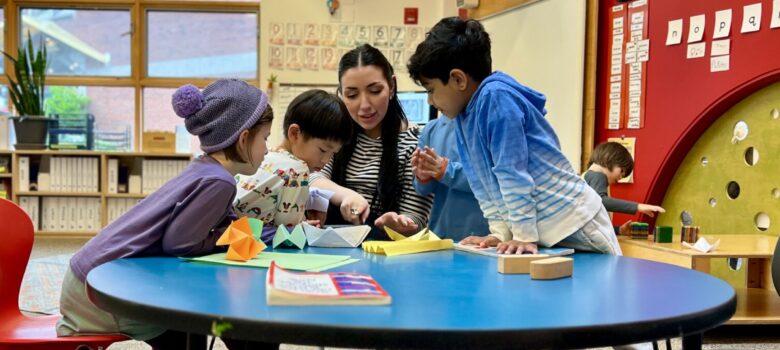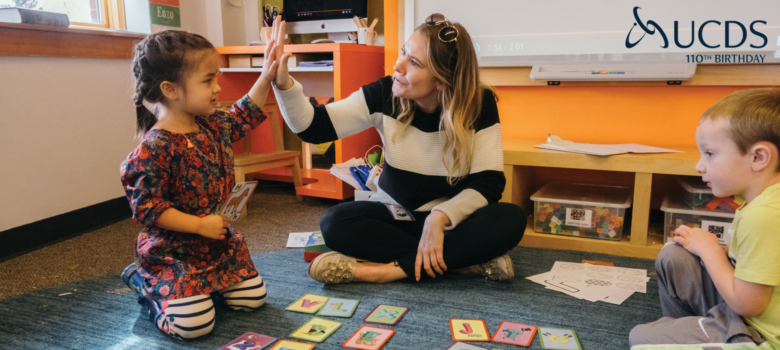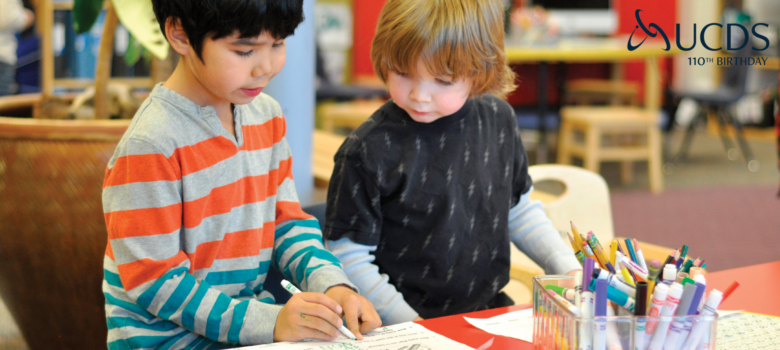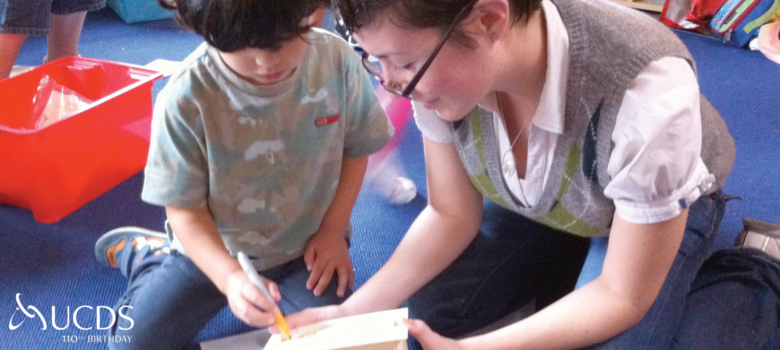Here’s Laurel (Resident Early Elementary Teacher) back with further thoughts on educator engagement with students in outdoor education settings. It’s been a breath of fresh air (har!) to have her perspective on outdoor education and the opportunities for real learning if can yield here on the blog. -Ed.
__________
I recently wrote a blog reflecting on what I learned about outdoor open-ended play at The Day of Dialogue Conference held here in Seattle. Since that time, I have searched for examples of this type of play to support the ideas I learned at the conference. I see outdoor open-ended play at UCDS during fresh air time and I decided to observe students engaging in the outdoors.
First, we need to step back a moment and remember that outdoor open-ended play is best pursued with an intentional plan. This means making sure we have material, space, and time to successfully set up this type of play.
Here at UCDS, our “Tower” (elementary level -Ed.) playground has a section that is filled in with bark-mulch, a tree with low branches serving as a focal point in this area, and some large boulders and rocks which lay on top of the mulch. Adjacent is a shed filled with all types of materials, there are ropes, wooden planks, pulleys, wheelbarrows, and many more supplies for students to pull out and use as needed in their play. This is a space that was purposefully set up for outdoor open-ended play; now all we need to do is fill the area with students, and see how they engage! Everyday at recess Tower students (grades 1-5), and occasionally students from the Labyrinth (Pre-k – Kindergarten aged students) come over to this space to engage in the outdoors.
As I observe students using the materials to play in this area of the playground, I watch them create swings, homes, machines, and really everything and anything that they can imagine. As a teacher I remember the guidance that I learned at the conference about engaging with students during this type of play, I make sure to take a step back and maintain my role as the observer.
I watch as students create individually, and collaboratively. “Okay, can you hold this here?” a student asks as she problem solves with a peer while building a fort. Once these plans are constructed, students play and organize games, and then they take down their creations, sometimes producing something new or different, or happy with their accomplishment moving on to a different area on the playground. It seems that there are endless possibilities and benefits when students are learning through open-ended play.
A take-away from observing on my own and my time learning about outdoor open-ended play at the conference is the consideration of underrated possibilities in students making new learning connections in their play, and not just “letting off steam.”




